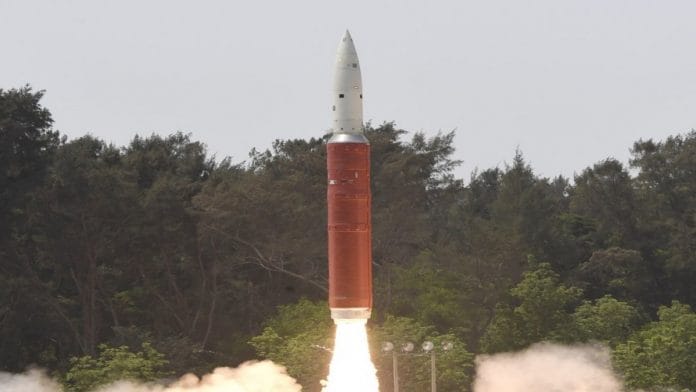New Delhi: NASA has found that at least 28 pieces of debris from India’s ambitious anti-satellite (A-SAT) missile test are still in the low Earth orbit — over seven months after India successfully test-fired the missile, thereby joining an elite group to possess such capability.
After the missile test, NASA had said it created around 400 pieces of debris that could threaten the International Space Station (ISS) as well as future space missions.
But Jonathan McDowell, an astrophysicist at the Harvard-Smithsonian Center for Astrophysics, Tuesday told ThePrint that NASA has tracked at least 101 pieces of debris from the A-SAT test initially, of which 28 still remain in low Earth orbit.
“We don’t know the size of the debris but most pieces are probably less than a metre in size, maybe 10 cm,” McDowell told ThePrint.
McDowell explained that some of these fragments travel at high speed of over 28,000 km/hour and thus pose a risk to satellites.
“In particular, the orbits (debris) can intersect with that of the International Space Station. The risk of collision is low, but not completely negligible,” he said, adding that computer models show some of the debris could last in the orbit until 2022.
Concern over space debris
Debris in the low Earth orbit slowly starts decreasing their altitude due to friction in the atmosphere. Once these fragments re-enter the Earth’s atmosphere, they burn up.
According to NASA, over 5,00,000 pieces of debris or “space junk” are tracked as they orbit the Earth. They travel at such high speed that even a small piece of orbital debris can damage a satellite or a spacecraft.
Increasing space debris has been a cause of concern across the globe as it threatens astronauts aboard the ISS. The threat of a collision in space has also increased significantly with space-faring countries launching more and more satellites.
Also read: Pentagon defends India’s A-SAT test, says country is preparing for threats in space







How many millions debris are in space and which country created them? This is idiot report (fake news) of anti-India to any development of India.
Well, not an Indian journalist. Yet the first paragraph praises India, stating India has joined an elite club. Then one metre debris and ten cm debris? What a range! The piece projects an American scientist’s fears. So the writer or editor or proprietor need not just bother about debris of other space vehicles.
I request Indian journalists to investigate and report the debris longevity of similar tests by America and China which were carried out at much higher altitudes.
Every time just accepting the words by these foreigners won’t be accepted in ‘New India’. Anyone up to the challenge?